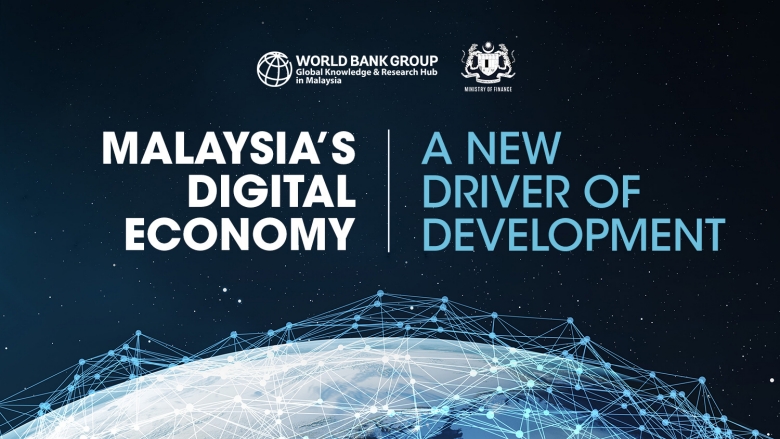For Malaysia to continue progressing in its development path, the digital economy is poised to be the new driver of development. However, businesses in Malaysia have adopted digital technologies less readily than the government and population.
- Rapid growth in basic digital adoption has contributed to a new digital divide where Malaysia lags behind international peers in digital adoption by businesses.
- Only 62% of businesses are connected to the Internet, 46% has fixed broadband (often of low quality) and 18% have a web presence of some kind.
- Large export-oriented firms dominate the digital economy as they adopt e-commerce at higher rates than SMEs.
- Most of the digital economy’s measurable growth has been concentrated in the manufacturing sector of urbanized states.
For the country to ensure that growth in the digital economy is broad-based and sustainable, key barriers related to digital connectivity, entrepreneurship and taxation need to be addressed.
Digital connectivity:
Ensuring that Malaysia’s digital infrastructure provides consistent, reliable and ultra-fast broadband service is key to unlocking the potential of the digital economy.
- Malaysia lags in the coverage and adoption of fixed broadband services.
- Lack of market competition has also led to high prices, low coverage, and limited ambitions for fixed broadband in Malaysia.
- Telekom Malaysia controls 92% of fixed broadband subscriptions, making the market more concentrated than that of ASEAN or OECD countries.
- Policy objectives for Malaysia’s digital infrastructure are two-fold:
- Enhance the quality and affordability of broadband services
- Improve access to ultra-fast broadband networks
Digital entrepreneurship:
Promoting digital entrepreneurship is an important avenue through which Malaysia is attempting to spur economic growth and job creation. The government has implemented various initiatives but obstacles remain:
- Shortages in human and financial capital.
- Malaysia’s education system and workforce training programs are not yet preparing workers with the right skills for the digital economy.
- Firms experience issues with access to capital in the early stages of growth.
- Continued reliance on cash for transactions in Malaysia.
- Ongoing tensions between data protection and its legitimate use for commercial purposes
- Difficulty in accessing government data.
- Weak professional networks among digital entrepreneurs.
- Lack of an integrated national plan to develop next-generation technologies.
Taxing the digital economy:
Malaysia needs to reform its laws and policies to ensure its tax base fully reflects the scale of transactions and profits generated by the digital economy. At the same time, it is important that this does not interfere with the growth of the digital economy.
- Malaysia currently has limited means to tax cross-border transactions in the digital economy.
- In January 2018, Malaysia took a major step in addressing the taxation problem by signing a multilateral convention to update international tax rules.
- Malaysia has three options in terms of taxing the digital economy:
- Expand the tax base to enterprises based outside the country
- Level the playing field between domestic and foreign firms
- Support mainstream taxation
The digital economy plays an increasing role in Malaysia’s journey towards becoming a high-income nation. Therefore, unlocking the potential of the digital economy is key for progress. Options toward reform include:
- Creating a dynamic ecosystem for the digital economy to improve the infrastructure, regulations, skills and public finance.
- Achieving ubiquitous, fast, and inexpensive internet connectivity for businesses and households, and improve on Internet regulation to correct unfair and damaging business practices.
- Improving human capital through better curriculum and learning opportunities, while engaging more vibrant private sector financing.
- Taking measures that will safeguard future tax revenues from the digital economy to improve public services and reinvest in key areas of the economy.

